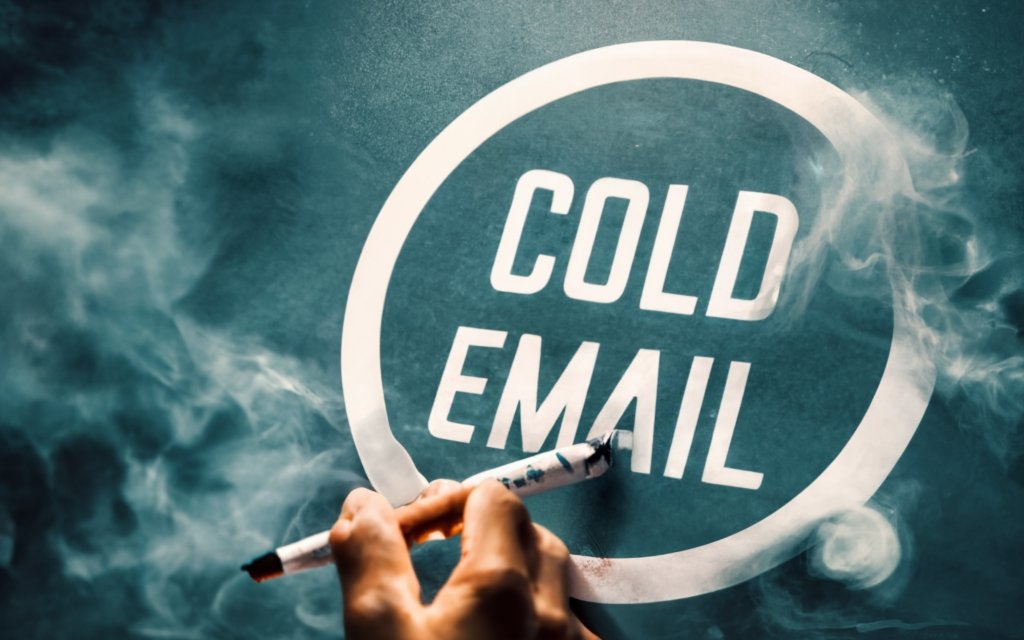Cold emailing can be an effective tactic for generating leads, landing jobs, and building connections – if you know how to craft compelling outreach. This complete guide reveals proven tips and strategies for writing cold emails that spark engagement and drive results in 2022. Learn how to structure effective cold emails, avoid common pitfalls, manage compliance, track performance, and continuously optimize your approach. With the right approach, cold emailing provides one of the highest ROIs for reaching prospective customers, hiring managers, investors and more.
What is a Cold Email and How is it Used?
Cold emailing refers to sending emails to potential customers, clients, or contacts who you have no pre-existing relationship with. It’s a common and effective way to generate leads, apply for jobs, reach out for sales opportunities, and build your professional network.
Definition and Purpose of Cold Emailing
A “cold” email is one sent to someone the sender does not know personally or have an established business relationship with. This differentiates it from emails to people within your existing network, like friends, colleagues, or current customers.
The recipient likely does not know you or have prior context about your business or interests. That’s why cold emails are often viewed sceptically or as spam. However, when done right, they can be a powerful tool to:
- Initiate contact with a potential new customer, client, hiring manager, or strategic partner.
- Introduce your business, skills, products, or services to relevant decision-makers.
- Start conversations that lead to sales opportunities, job interviews, valuable connections, or other desired outcomes.
The purpose of cold emailing is to cut through the noise and capture attention from prospects who otherwise may never engage with your outreach attempts through traditional channels.
Well-crafted cold emails personalized for the recipient have much higher conversion rates than generic spammy messages sent in bulk. Though it does require effort to craft effective cold emails, the return on investment can be well worth it.
Common Uses of Cold Emailing
Here are some of the most popular uses and applications for cold email outreach campaigns:
Cold emails are commonly used in sales and marketing to generate new qualified leads. By emailing relevant decision-makers, you can introduce your business and start meaningful conversations with prospects in your target audience. This leads to sales meetings, product demos, free trials, and new business.
Applying for Jobs
Emailing recruiters, hiring managers, or company insiders is an effective way to get your resume and qualifications in front of the right people at an organization. This allows you to bypass rigid application tracking systems and automated filters where resumes go into “black holes” never to be seen.
Cold emailing is a standard technique used by sales development reps (SDRs) to book more qualified meetings and calls with potential buyers. Email outreach helps sales teams hit their quotas by proactively connecting with prospects most likely to benefit from their offering.
Networking and Informational Interviews
Reaching out cold to professionals in your industry allows you to build a network and gather insider advice and knowledge. Most people are open to giving 20-30 minutes of their time to offer guidance, experience, and contacts with the right warm outreach email.
Investor Outreach
Founders and entrepreneurs commonly use cold emails to introduce their startup or business idea to prospective investors and VC firms. Though investors receive tons of pitches, a compelling cold pitch via email can capture attention and investment capital.
Influencer Marketing
Brands wanting exposure and endorsements from relevant influencers and industry leaders rely on cold outreach to make that initial connection. While big celebrities may be out of reach, most micro-influencers are receptive to cold emails offering complimentary products, paid sponsorships, or other partnerships.
The versatile list of uses for cold emailing highlights why it remains such a common and effective growth strategy decades after email was first invented. As long as you avoid blatant spam and focus on personalization, almost any professional communication can start from a cold email introduction.
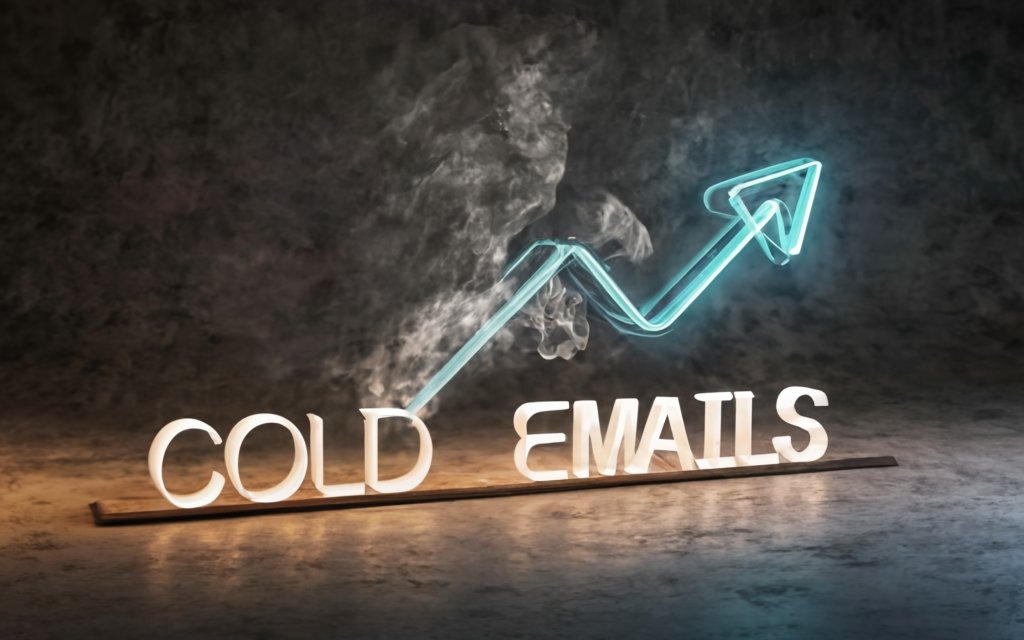
Key Elements of an Effective Cold Email
Crafting a successful cold email is part art, part science. While there is no single template that always works, the most effective cold emails contain certain core elements optimized to capture attention and spark engagement.
Let’s break down the key ingredients you need to write emails that cut through the noise:
Succinct Subject Line Focused on Recipient’s Needs
The subject line is the first and possibly only thing your prospect sees before deciding whether to open your email. It must grab their attention in under 5-10 words while relating to their interests.
Avoid spammy sales language. Instead, focus on provoking curiosity, demonstrating relevance, or providing value:
- Ask an intriguing question related to their work. E.g. “Struggling with [X]?”
- Offer advice tailored to their role. E.g. “3 tips to improve [X] as a marketing manager”
- Reference a need or pain point they likely have. E.g. “Solution for scaling lead gen efforts”
- Praise a recent achievement. E.g. “Impressed by your growth to 1M users!”
- Name drop a mutual connection. E.g. “[Name] suggested I reach out to you”
The right subject piques curiosity and positions you as helpful, leaving them wanting to learn more.
Personalized Opening Demonstrating Knowledge
Your opening line sets the tone. While some sales emails open with a generic “Hi [Name], the most effective cold emails showcase personalized knowledge.
Look up details about the prospect or their company to reference in the first 1-2 sentences. This demonstrates you did research on them and gets their attention.
Examples of openings that work:
- “As the Senior Director of [Department], you must get hundreds of cold emails daily. I’ll try not to waste your time and keep this brief.”
- “I saw you recently worked on [Project X] – that’s an impressive accomplishment given the scope.”
- “I came across your guest article in [Publication] and loved your insights on [Topic].”
Even a thoughtful compliment or observation goes far to stand out from the spam they constantly receive.
Brief Background Introducing Yourself and Purpose
After grabbing their interest, take 1-2 quick sentences to introduce yourself, your company, and why you’re reaching out.
This transitions the focus to your shared interests or how you can provide value. For example:
- “My name is [Name] and I’m the [Title] at [Company]. We help companies like yours [achieve X goal] through [offering Y].”
- “I handle [Role] at [Company]. We recently helped [similar company] increase conversions by 5X in 60 days by optimizing their website for mobile.”
Keep it succinct. There will be time to elaborate later. Right now you just need to orient them on who you are and why you matter.
Explain How You Can Help with Their Problems/Goals
Here is where you expand on your value proposition and how it maps to their needs. But avoid sounding salesy or pushing your product/service too hard.
Instead, focus on how you understand their pain points and goals, and your natural alignment to helping them solve those problems or achieve those objectives.
- “I know hiring top talent is critically important as you expand to new markets this year. We’ve helped companies like yours build world-class remote teams up to 2x faster.”
- “As a startup founder myself, I understand the constant challenge of attracting investors and capital before you have much traction. Here are 3 ways we can jumpstart your fundraising efforts.”
This demonstrates that you truly “get” their needs. The email now flows naturally into how your solution is the perfect fit.
Clear Call-to-Action for Next Steps
Don’t leave them wondering what to do next. Close every cold email with a specific CTA or “ask” to guide the recipient into taking action.
Some examples:
- “If you’re open to discussing this further, I’d love to schedule a quick call next week to explore a potential fit.”
- “I’ll follow up in a few days, but in the meantime please let me know if you have any questions or would like some helpful resources on [Topic].”
- “If you have interest in [Product/Service], simply reply “YES” and I’ll send over some more details.”
Make it crystal clear how they should engage if your offering resonates. Don’t risk losing out simply because you didn’t explicitly say what you wanted them to do.
Professional Sign-Off with Contact Information
Every cold email should end with a courteous sign-off along with your complete contact details either within the body or in your email signature.
Common professional sign-offs include:
- “Best regards,”
- “Sincerely,”
- “Thank you,”
- “Looking forward to connecting,”
Then make sure to include:
- Your full name
- Job title
- Company name
- Email address
- Phone number
- LinkedIn profile link
This provides them multiple avenues to respond or learn more about you and your business.
It also builds credibility and trust, removing any “Is this person even real?” hesitation.
Putting It All Together
An effective cold email has six core pieces – the subject, opening, introduction, value proposition, CTA, and sign-off.
With the right framework in place, it’s easier to customize emails that get opened, read, and drive results for any situation.
Of course, nailing the copy, tone, and specifics requires practice and testing different approaches. But you can optimize that process by starting with a solid structure containing all the key elements covered here.
Follow this checklist, and your cold emails will see increased engagement overnight.
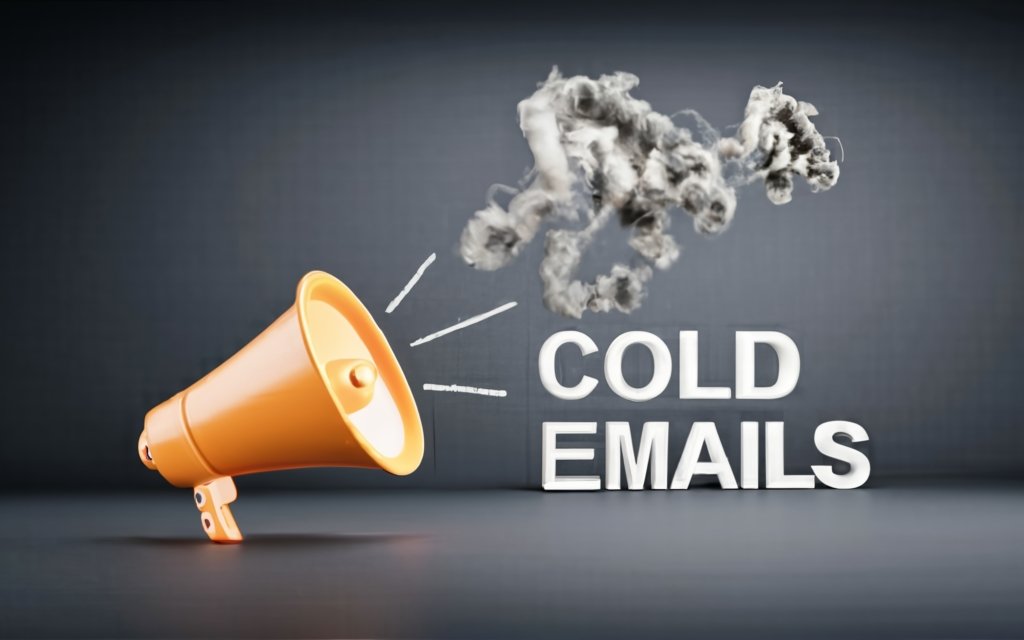
How to Craft Successful Cold Emails: Step-by-Step
Now that we’ve covered the key components of effective cold emails, let’s walk through the full process for writing cold emails that drive results.
Follow these steps, and you’ll create personalized outreach that sparks engagement and conversations with your ideal prospects.
Step 1: Research the Prospect/Company to Personalize
Personalization is the secret sauce that makes cold emails work in 2022. With so much noise and generic spam, taking the time to customize your message demonstrates extra effort.
Before drafting your email, spend 15-20 minutes researching key details on the prospect and their company. Sites like LinkedIn, client websites, and news articles are great sources.
Look for nuggets like:
- Recent promotions or new initiatives they are leading
- Major projects or achievements to congratulate them on
- Specific pain points or challenges others in their role/industry face
- Any personal details like hobbies, education, hometown, etc.
Look for ways to weave in these personalized details to show you did your homework on them and their needs.
Step 2: Keep Emails Concise at 100-200 Words
Attention spans are short, especially for unsolicited emails. Keep your cold emails focused and scannable.
Data shows ideal length is 100-200 words maximum. This restricts you to hitting only the main points.
Avoid giant dense paragraphs or elaborating too much. You want just enough to introduce yourself and show relevance.
Use short sentences and bullet points to make the email easy to digest quickly. Graphics and videos can also capture attention if you have an eye-catching asset.
The goal is to make your message punchy and compelling right out of the gate.
Step 3: Focus on Their Perspective, Not Yours
One of the biggest mistakes people make with cold emails is focusing too much on themselves or their product.
But your prospects don’t know you yet, and likely don’t care about your company or offering at this stage.
Instead, make the email all about them. Use language emphasizing you understand their problems and goals. Explain how you can help in a way that relates directly to their needs.
Share insights, statistics, or examples demonstrating you get where they are coming from. Avoid too much “me me me” language – that’s a quick path to the trash folder.
Step 4: Ask for Something Specific They Can Easily Respond To
Don’t leave next steps ambiguous. Your call-to-action should clearly guide them into a simple response.
But don’t overreach either. Asking for a full 30-60 minute call right off the bat is a big request for a cold prospect.
Start smaller – ask for a quick 15-20 minute phone call, a short coffee chat, their opinion on something, a connection on LinkedIn, etc.
The request should feel light and easy to fulfill. This makes them more likely to engage, while getting your foot in the door.
Step 5: Follow Up If Needed But Avoid Sounding Salesy or Spammy
Not every cold email will get an immediate reply – that’s normal. Follow up in 3-5 days re-sharing your original ask or value proposition.
But be careful not to badger them or sound desperate. Limit follow-ups to 2-3 total, spaced out over 1-2 weeks.
Avoid using manipulative scarcity tactics or applying too much pressure. You want to gently guide them, not coerce them into engaging.
The goal is landing a friendly conversation – not necessarily an instant sale. Don’t sacrifice your credibility just to get a quicker response.
Master the Step-by-Step Process
Writing a cold email is part art, part science. But you now have a proven step-by-step framework to optimize your outreach.
- Research and personalize
- Keep it concisely compelling
- Make it about them, not you
- Include an easy ask
- Follow up politely if needed
These five steps, when executed well, all combine to boost open rates, response rates, and conversions from your cold email campaigns.
So do your homework, crank up the personalization, and focus on value. If you master this process, your cold email results are sure to improve.
Common Mistakes to Avoid When Cold Emailing
While best practices improve cold email success rates, there are also pitfalls to avoid. Sidestep these common mistakes, and your emails will make prospects hit reply, not delete.
Mistake #1: Sending Overly Salesy or Aggressive Pitches
Nothing kills response rates faster than an obvious sales pitch or aggressive promotional tone. Yet many cold emails still harp on product features or take a “hard sell” approach.
Your prospects don’t know you yet. Lead by providing value first, not demands or pressure. Focus on building rapport and trust.
Save the sales push for existing warm leads. Early cold emails are about starting a relationship – not immediate conversion.
Mistake #2: Making Emails Too Long and Unfocused
You only have seconds to grab attention before prospects disengage. But many cold emails drone on for multiple paragraphs full of unnecessary details.
Keep your emails tightly focused. Align each sentence to demonstrating relevance and value.
If recipients are truly engaged, there will be time for elaboration later. Resist temptations to share irrelevant background or life stories.
The shorter and more focused your cold email, the higher chance it gets read and acted on.
Mistake #3: Forgetting to Include a Clear Call-to-Action
Even compelling cold emails often lack a specific CTA or “ask”. This leaves the recipient unsure how to engage next.
Tell them exactly what simple step you want them to take – schedule a quick call, visit your website, answer a question.
Without clear guidance, you risk them simply reading your email and moving on. Don’t lose out on conversions simply due to an absent or weak CTA.
Mistake #4: Not Personalizing for Each Recipient
The spammiest tactic is sending the same generic text to every prospect. Yet our inboxes are still flooded with impersonal template-based emails.
Personalized messages demonstrate extra effort on your part. It shows recipients they’re not just another name on a big list.
Avoid laziness. Take the time to customize and tailor each email for its unique audience. Personalization drives dramatically higher engagement.
Mistake #5: Skipping Follow-Ups if No Initial Response
You won’t hear back from every prospect after the first email. But many stop there, leaving possible opportunities on the table.
Follow up 2-3 times total over a 1-2 week period. Frequently the second or third touch finally sparks engagement.
Just avoid badgering recipients in rapid succession. Space out your follow-up sequence, and gracefully accept non-responses when necessary.
Learn from Failure and Iterate
Perfecting cold emails takes testing and honing your approach over time. You’ll inevitably make some mistakes early on.
The key is quickly learning from failure and evolving your outreach. If an email doesn’t work, tweak your messaging and try again.
Common adjustments that give better results include:
- Increased personalization and segmentation
- More benefit-driven messaging vs. product features
- Starting with a smaller ask to get your foot in the door
- Following up more strategically based on engagement signals
- Improving subject lines and CTAs through A/B testing
Don’t get discouraged. Failure helps you learn what doesn’t resonate. Apply those lessons, and your cold email results will steadily improve.
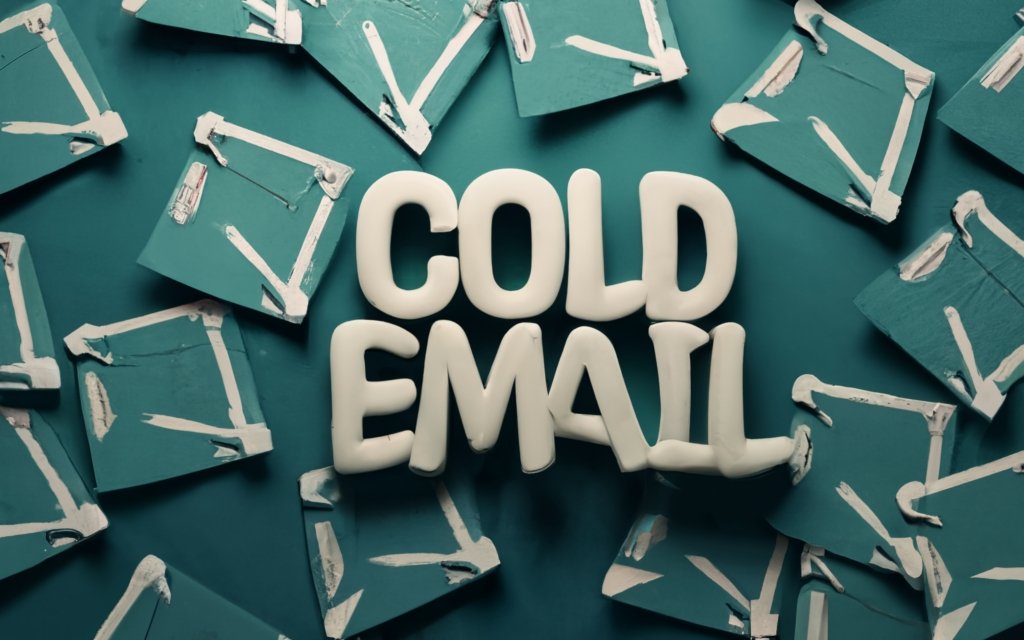
Cold Email Best Practices and Strategies
Let’s round up some proven best practices and strategies to make your cold emails more effective. Apply these tips, and you’ll see increased open rates, responses, and conversions.
Best Practice #1: Personalize Every Email
As discussed earlier, personalization is the #1 factor impacting cold email success. Each email should showcase customized knowledge about the prospect and their needs.
Do your research beforehand on every individual recipient, and work in relevant details like:
- Recent accomplishments or initiatives
- Background and work experience
- Current role and responsibilities
- Company pain points and objectives
- Mutual connections or interests
Avoid generic spammy approaches. Hyper-personalized emails prove you did your homework on them andGrab attention and build trust.
Best Practice #2: Segment Your Outreach Lists
Instead of blasting the same message to everyone, segment your outreach lists into similar groups first.
Look for ways to segment by:
- Industry
- Company size
- Location
- Seniority
- Job role/function
Then craft targeted emails aligning to each group’s specific interests and needs.
For example, an email focused on scaling engineering teams works for tech startups. But execs at a bank likely care more about security and compliance.
Best Practice #3: Use Cold Email Software to Automate
Crafting personalized emails is hard. Doing it manually at scale is nearly impossible.
Leverage cold email software like Mystrika to automate segmentation, personalization, and send sequencing. This saves huge time while optimizing results.
Key features to look for include:
- Bulk personalization with merge tags
- Email analytics and reporting
- Automated follow-up capabilities
- List management and segmentation
- Warmup tools to improve deliverability
Best Practice #4: Demonstrate Authority Where Possible
Prospects naturally wonder “Why should I trust this stranger emailing me?”
Where possible, subtly showcase your credibility and authority. This could include:
- Media mentions or press coverage
- Testimonials and customer logos
- Stats on customers served, revenue, or growth
- Personal brand building through content marketing
- Associations with recognized brands/partners
Don’t overdo it. But social proof and authority help prospects take you seriously faster.
Best Practice #5: Carefully Proofread Every Email
Nothing screams amateur or turns off recipients faster than sloppy typos and grammar mistakes.
Proofread every cold email before sending. Or use tools like Grammarly to catch issues.
Sloppy emails reflect poorly on your brand. What looks like a quick “cold” email likely took time and strategic thought. The writing quality should reflect that.
Optimize and Iterate to Improve Results
Mastering cold email is an ongoing process of refinement and optimization. Regularly apply proven best practices, but also track data and experiment.
Tools like email analytics and A/B testing reveal what message variations resonate best with your recipients. Use those learnings to tweak your outreach approach over time.
With a process of continuous optimization, your cold email results are sure to steadily improve.
Cold Email Templates, Examples, and Tools
Let’s look at some sample cold email templates and tools to make executing effective cold outreach easier.
Job Application Cold Email Templates
Applying for jobs via cold email allows you to bypass rigid application tracking systems and get directly in front of hiring managers.
Here are two email templates that work for job applications:
Template 1 – Introduction Email
Subject: [Your Name] - Interested in [Role] at [Company]
Hello [Hiring Manager Name],
I came across the job posting for the [Role] at [Company] on [Website]. Given my background and experience in [relevant skills], I believe I would be a great fit for this position.
I have been working in [industry/field] for the past [X years] and have expertise in areas like [relevant capabilities]. As you can see from my attached resume, I have successfully [achievements tied to role requirements].
I would love the opportunity to schedule a call to further discuss my qualifications and interest in this role. Please let me know if you have time next week for a quick phone call. I can be reached at [phone and/or email].
Thank you for your consideration,
[Your Name]Template 2 – Follow-Up Email
Subject: Following Up - [Your Name] and [Role] at [Company]
Hi [Hiring Manager],
I hope you've been well. I'm following up on my previous email regarding the [Role] position at [Company]. I'm very interested in this opportunity given my background in [relevant skills] and [qualifications].
I believe this role is an excellent fit for my skills and experience, and I would love the chance to speak with you further about the position. Are you available sometime next week for a call?
Please let me know what would be the best way to schedule a conversation. You can reach me at [contact info]. I look forward to hearing from you!
Best,
[Your Name]Follow these templates but customize the specifics for each application.
Sales Prospecting Cold Email Templates
Cold emails are commonly used by sales teams to engage new prospects. Here are proven templates to drive discovery calls:
Template 1 – Introduction Email
Subject: Quick Introduction - [Your Name] at [Company]
Hi [Prospect Name],
My name is [Your Name] with [Company]. We work with [prospect's industry/role] like yourself to help them [key benefit or outcomes].
I noticed [detail about prospect's company or role] which caught my attention, and made me think our [offering] could help provide [relevant benefits].
Would you have 15 minutes this week or next for a quick call to see if working together might be a fit? I'm happy to work around your schedule.
Looking forward to connecting. Let me know which day/time works best on your end.
Thanks,
[Your Name]Template 2 – Follow-Up Email
Subject: Following up - [Your Name] at [Company]
Hi [Prospect Name],
I wanted to follow up on my previous email to see if you had interest in discussing [offering] further.
I understand you're likely busy. But I believe [offering] can provide a lot of value specifically for [prospect company's needs]. At a minimum, I'm happy to share some best practices that may help with your [goals/pain points].
Please let me know if you'd be open to a quick call next week. If now isn't a good time, no worries at all. I'm happy to circle back in a couple months.
Thanks again,
[Your Name]As before, customize and research the prospect to make these personal and compelling.
Sample Cold Emails for Various Uses
To further inspire your cold outreach efforts, here are a few more example cold emails for different situations:
Networking Outreach Email
Subject: Hope you've been well! - [Your name]
Hi [Name],
It's been awhile! I hope you've been having an amazing year so far. We haven't chatted since our days back at [university, company, association, etc]
I wanted to reach out because I noticed you're now working at [new company] as their [role]. I'd love to learn more about your journey into [industry] and any insights you have from your experiences so far.
Would you have time in the next couple weeks for a quick 20 minute coffee chat? Or if easier, we could jump on a phone call too.
Looking forward to getting back in touch and catching up! Let me know when might work on your end and I'll get something booked.
Cheers,
[Your name]Investor Outreach Email
Subject: Seeking investment insights
Hi [Name],
My name is [Your name], founder of [Your startup]. We're an early-stage startup aiming to [explain your business in 1-2 sentences].
I came across your background at [firm] and experience investing in [space relevant to your startup]. I would love any advice you have regarding early fundraising and attracting investors' attention before having substantial traction.
If you're open to a quick 20-30 minute call to share any guidance, please let me know. I'm happy to work around your schedule and am truly grateful for any insights you can offer.
Looking forward to hopefully connecting. Have a great week ahead!
Best,
[Your name] Influencer Outreach Email
Subject: [Your brand] + [Their brand] Partnership?
Hi [Name],
My name is [Your name] and I head up partnerships for [Your brand]. We're an up and coming [your space] brand specializing in [your differentiator].
I noticed you recently created some [relevant content] which was amazing! I think a partnership between [Your brand] and yourself could provide a lot of value for both our audiences.
Would you be open to doing a quick call to brainstorm ideas? We have some ideas already on collaborations that could be mutually beneficial, but would love your thoughts on how we can work together best!
Let me know if discussing further makes sense! No pressure at all if it's not a fit currently.
Thanks,
[Your name]Top Cold Email Tools and Software Options
Executing personalized cold campaigns at scale is difficult manually. Cold email software and tools can automate and optimize the process.
Here are top solutions worth considering:
Mystrika – All-in-one cold email platform optimized for deliverability. Offers email warmup, templates, analytics, automation, and more.
Mailshake – Simple drag-and-drop cold email builder with automation capabilities. Free and paid plans available.
Lemlist – Cold email toolkit with prospecting, templates, and AI writing assistant. Works with Gmail and G Suite.
Outreach.io – Sales engagement and automation platform with cold email features targeted to sales teams.
Yesware – For Gmail and Office 365 users, includes templates, analytics, and AI-generated messages.
Reply – All-in-one platform with lead enrichment, email verification, sequences, and deliverability optimization.
Pairing cold email best practices with the right tools leads to successful outcomes. Do your research to find software matching your needs and budget.
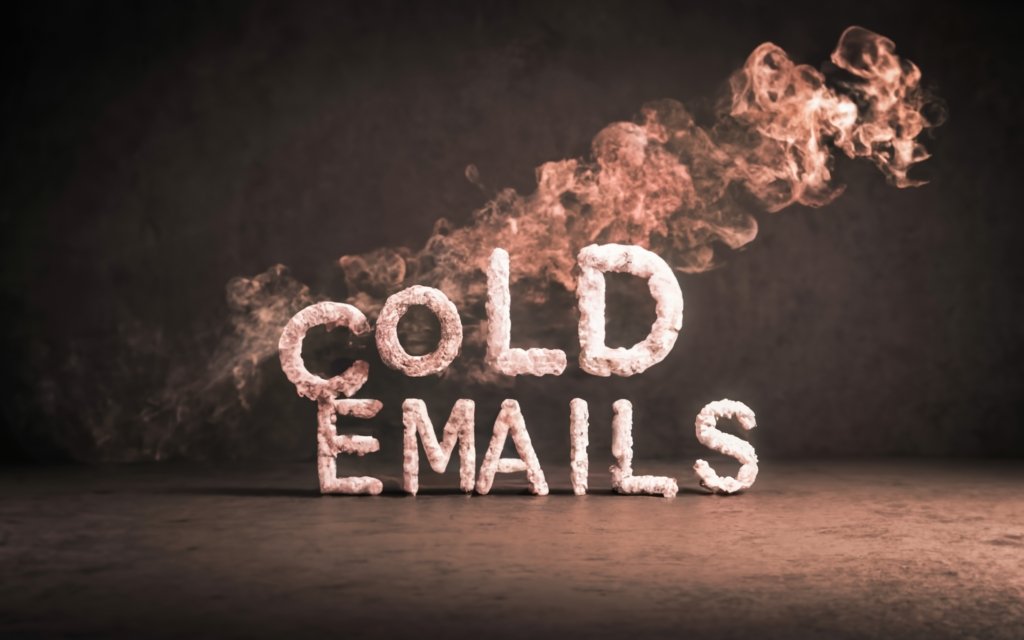
Measuring Performance and Optimization
To improve cold email results over time, you need to closely track key metrics and continuously test and refine your approach.
Let’s explore some areas to focus on for optimization.
Key Metrics to Track
These core metrics provide visibility into the effectiveness of your cold emails:
Open Rates – Percentage of recipients who open your email. Benchmark around 10-30%.
Click Rates – Percentage who click links within your email. Goal of 2-5% is good.
Reply Rates – Percentage who engage back with a reply. 1-3% is a solid target.
Bounce Rates – Percentage of emails bounced back due to invalid addresses. Aim for under 2%.
Unsubscribe Rates – Percentage who opt-out of future emails. Watch for any spikes.
List Growth – The rate at which your recipient lists grow through prospecting.
Sales Conversions – For sales campaigns, the percentage converting to customers.
Track these metrics over time, across campaigns, and by segment to spot optimization opportunities.
A/B Testing Different Approaches
A/B testing involves sending one variation of an email (A) to half your list and another variation (B) to the other half.
You then compare open rates, click through rates, and other metrics to see which performed better.
Elements to test with A/B splits include:
- Subject lines
- Sender name
- Content formatting (text vs. HTML)
- Email structure and order of sections
- Calls-to-action (wording, placement, etc)
- Offers or messaging
- Email length and copy variations
Over time, you can refine approaches that resonate best with your audience.
Improving Deliverability Through Warmup
One reason for poor email metrics can be deliverability issues causing emails to be blocked or land in spam folders.
Doing proper email warmup helps increase your sender reputation and bypass filters to reach the inbox.
Warmup involves slowly increasing the volume of emails sent over time in an organic way that mimics real user behavior. This builds trust and improves deliverability.
Following Up Strategically Based on Engagement
Your first cold email will often not get a response. Following up is critical.
But instead of blasting the same repeated emails, follow up strategically based on prior engagement and profile data.
For example:
- If they opened but didn’t click, highlight your call-to-action again
- If no open at all, experiment with a new subject line hook
- Send different follow-up paths based on their profile segment
- Provide value-add content like links to helpful resources
Customizing follow-ups boosts conversions by keeping sequences relevant.
Continuously Evolve and Optimize
With the right data and testing mindset, you can constantly refine and improve cold email performance over time.
Review metrics regularly, conduct A/B tests, address deliverability, and leverage engagement signals to optimize every aspect of your cold email process.
The work is never done, but it pays off in higher responds rates and more sales opportunities.
Conclusion and Summary of Cold Email Best Practices
Cold email remains one of the most effective tactics for getting in front of qualified prospects and starting meaningful conversations. By following the strategies covered in this guide, you can achieve email success.
Let’s recap some of the key best practices:
Research and Personalize Every Message
Personalized emails have dramatically higher open and response rates. Take time to research prospects before reaching out and work in relevant details. Demonstrate you did your homework and understand their needs.
Write Concise and Compelling Copy
Messages should be focused and scannable. Get to the point quickly using short paragraphs and sentences. Data shows ideal length is 100-200 words. Anything longer risks the recipient losing interest.
Structure Emails Effectively
Well-structured emails make your message more digestible. Include these core elements in order: personalized subject line, brief background, value proposition, CTA, and professional sign-off.
Focus on Their Perspective, Not Yours
Avoid too much talk about yourself or your product. Instead, emphasize how you can provide value tailored to their needs and goals. Make it about helping them first.
Follow Proven Compliance Regulations
Understand and comply with key regulations like CAN-SPAM, GDPR, and CASL based on where your prospects are located. Don’t risk fines or loss of trust.
Actively Seek Feedback and Optimization
Regularly track email metrics, run A/B tests, monitor deliverability, and leverage engagement triggers to continuously refine and optimize campaigns.
Automate for Consistency at Scale
Rely on cold email software to execute personalized outreach consistently across your entire prospect database. Manual efforts don’t scale.
Take a Genuine Interest in Building Relationships
Remember, the goal isn’t immediate sales. It’s starting real conversations that humanize you and eventually build lasting partnerships.
While nothing replaces the need for robust data and carefully crafted messaging, maintaining this mindset ensures your outreach leaves a positive impression.
Apply Lessons Learned to Future Efforts
Expect occasional failure and missteps. Learn from emails that don’t land and use those lessons to improve. Cold emailing takes practice and diligence.
Start Building Your Cold Email Strategy
The prospect of cold emailing can seem daunting. But armed with the right knowledge and game plan, anyone can execute effective campaigns.
Now that you know what works in 2022, the next step is developing a strategy leveraging the insights shared above.
Cold email remains one of the highest ROI tactics for reaching new prospects and growing your business. So embrace these best practices, have patience through early struggles, and begin putting together your plan of action.
The results will come. Just remember – it’s a marathon, not a sprint. Stick with it!
With a personalized, value-focused approach and persistence through iteration, your cold email efforts are sure to drive meaningful growth.
Here are the key takeaways for the entire article on effective cold emailing:
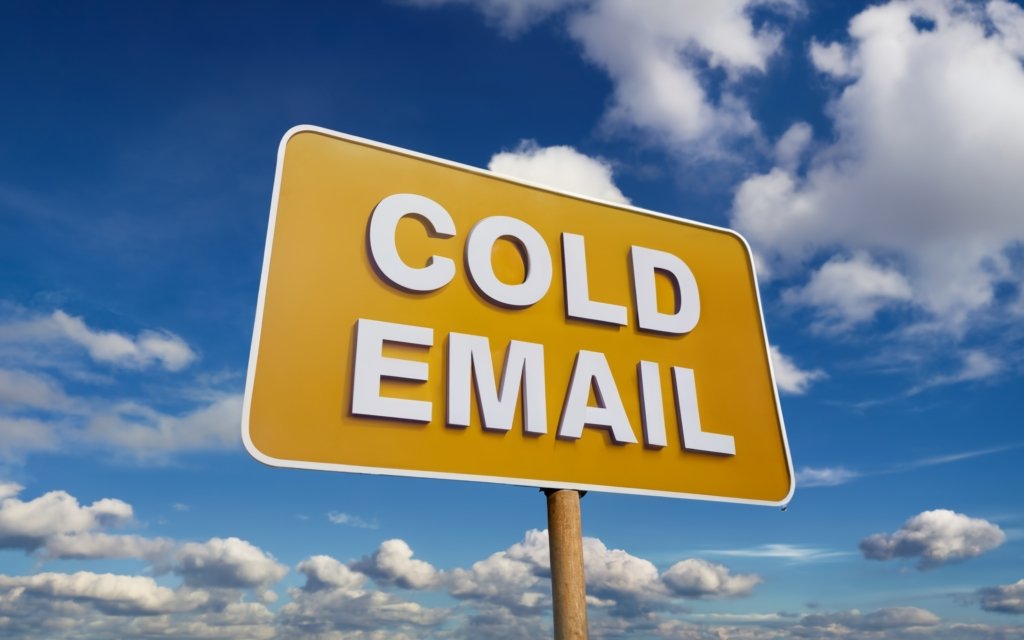
Key Takeaways:
- Cold emailing refers to outreach messages sent to prospects with no prior relationship. When executed correctly, it generates new leads, clients, and opportunities.
- Effective cold emails are personalized, concise, and focused on the prospect’s needs rather than a sales pitch. Research recipients before reaching out.
- Structure cold emails using proven elements: compelling subject line, brief background, value proposition, clear CTA, and professional sign-off.
- Keep cold emails short at 100-200 words maximum. Data shows this length has the highest engagement and response rates.
- Avoid common mistakes like overly salesy language, unfocused messages, missing CTA, and failing to follow up. These hurt open and reply rates.
- Use segmentation, compliance procedures, authority, and software automation to execute cold email best practices efficiently at scale.
- Continuously measure performance using metrics like open rates, improve deliverability through warmup, and optimize with A/B testing.
- Maintain a mindset of building relationships versus hard-selling. With the right strategic approach, cold email generates new business opportunities. Here are some frequently asked questions about cold emailing:
Frequently Asked Questions
What is the best day and time to send cold emails?
The ideal days are Tuesday through Thursday. Avoid Monday when inboxes are busiest and Friday when many people take off early. Best times are 10-11 AM or 2-3 PM local time for the recipient.
How often should you follow up if no reply?
Follow up 2-3 times total spaced 3-5 days apart. Any more than that risks seeming overly pushy or desperate.
What should your unsubscribe rate goal be?
Aim to keep unsubscribe rates below 2-3%. Any higher and it likely signals your messaging needs reworking.
What is an acceptable cold email open rate?
A 10-30% open rate is considered decent. Low single digit open rates likely mean issues with subject lines, targeting, or deliverability.
How many prospects can you email per day?
Limit emails to 50-100 prospects per day per sender. Any more increases chances of hitting spam filters and lowering deliverability.
Is cold emailing compliant with regulations like CAN-SPAM?
Yes, as long as you follow rules like including opt-out, identifying the sender, and avoiding deceptive content.
Should you personalize one-to-one or use email merge tags?
One-to-one personalization is ideal but not always scalable. Merge tags allow personalization at scale while still showing extra effort.
What tools help execute cold email campaigns?
Cold email software like Mailshake, Lemlist, Woodpecker, and Mystrika provide automation, deliverability, templates, and metrics to streamline outreach.

